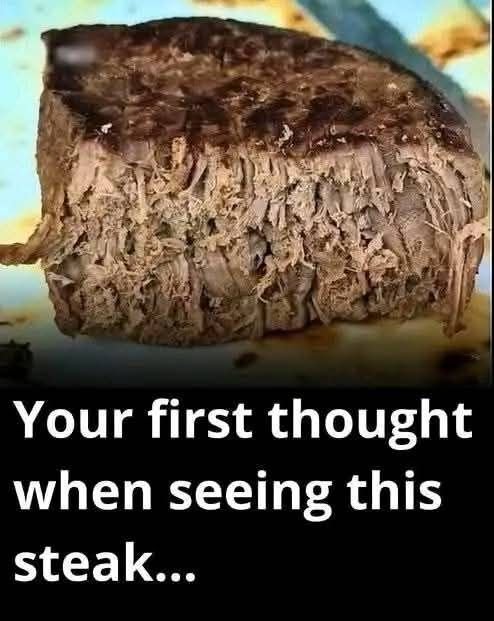Analyzing the Juicy Steak: A Deep Dive into a Culinary Delight
A perfectly cooked steak is more than just a piece of meat—it’s a culinary delight that combines rich flavors, textures, and techniques. Whether you’re a steak enthusiast or just someone who appreciates good food, understanding what makes a steak juicy, tender, and delicious can enhance your dining experience. In this analysis, we’ll explore the essential components that contribute to a juicy steak, from the cut of meat to cooking techniques, and the factors that elevate its flavor.
1. The Cut of Meat: A Critical Factor
The type of steak you choose plays a significant role in its juiciness and overall flavor. Some cuts are naturally more tender and marbled with fat, which helps retain moisture during cooking.
-
Tender Cuts (e.g., filet mignon, ribeye, sirloin): These cuts come from muscles that are used less frequently, so they’re naturally tender. Ribeye, for example, is known for its high-fat content, which provides both flavor and juiciness.
-
Less Tender Cuts (e.g., flank steak, skirt steak): These cuts come from muscles that are worked more during the animal’s life, leading to more connective tissue. They can still be delicious when cooked properly, but they require marinating or longer cooking times to break down the tough fibers.
2. Marbling: Fat’s Role in Juiciness
Marbling refers to the streaks of fat within the muscle tissue. This fat plays a crucial role in making a steak juicy and flavorful. As the steak cooks, the fat melts and imparts moisture and richness to the meat. A steak with higher marbling will tend to be juicier and more flavorful.
- High Marbling: Cuts like ribeye or New York strip have excellent marbling, making them juicy and tender.
- Low Marbling: Lean cuts like filet mignon have less fat, which makes them tender but less juicy compared to more marbled steaks.
3. Resting the Steak: The Secret to Juiciness
One of the most overlooked steps in cooking a steak is resting it after it’s been cooked. When a steak cooks, the muscle fibers contract, pushing out juices. If you cut into the steak immediately, these juices will run out, leaving the steak dry.
- Rest the Steak: After cooking, let the steak rest for 5-10 minutes (depending on the size of the steak) before cutting into it. This allows the juices to redistribute within the meat, resulting in a more flavorful and juicy steak.
4. Cooking Techniques: Locking in Flavor
How you cook your steak plays a huge role in its juiciness. There are several methods to consider, each with its benefits:
-
Searing and Roasting: A quick sear over high heat locks in the juices and creates a flavorful crust. After searing, you can finish cooking the steak in the oven to your desired doneness.
-
Grilling: Grilling over high heat creates a smoky flavor and a seared crust. The heat causes the fat to render, keeping the steak moist.
-
Sous-Vide: Cooking steak in a water bath at a precise temperature results in an evenly cooked steak with maximum juiciness. After sous-viding, you can sear the steak quickly in a hot pan to develop a crust.
-
Pan-Frying: Using a cast iron pan allows the steak to cook evenly and form a delicious crust. Adding a bit of butter or oil can help retain moisture, especially for leaner cuts.
5. Seasoning and Enhancing Flavor
The juiciness of a steak is not just about its tenderness; the seasoning and flavor profile matter too. Properly seasoning your steak is essential to enhancing its natural flavors.
-
Salt: Salt is a crucial seasoning that helps enhance the steak’s natural umami flavor. It’s best to salt the steak 30 minutes to an hour before cooking to allow the salt to penetrate and create a juicy crust.
-
Pepper: Freshly cracked black pepper adds spice and depth to the steak’s flavor. For an added kick, you can incorporate spices like garlic powder, rosemary, or thyme.
-
Butter or Oil: Adding butter or oil during cooking or resting helps seal in moisture and provides richness. You can also top the steak with compound butter for extra flavor.
6. Cooking Temperature: Achieving the Perfect Doneness
Cooking a steak to the perfect level of doneness is key to maintaining its juiciness. Undercooking or overcooking a steak can result in dry meat.
- Rare (120-130°F / 49-54°C): The steak will be warm in the center, but still mostly red and very juicy.
- Medium-Rare (130-135°F / 54-57°C): This is considered by many to be the ideal level of doneness for a juicy, tender steak. The steak will be pink in the center, juicy, and flavorful.
- Medium (135-145°F / 57-63°C): The steak will be more firm with a slight pink center but still juicy.
- Well-Done (160°F / 71°C and above): The steak will be cooked through and could become tough and dry, so it’s important to be mindful of the timing.
7. Pairing: Complementing Flavors and Juiciness
The right sides and sauces can enhance the experience of a juicy steak. A rich, flavorful sauce, like béarnaise or mushroom gravy, can add a luxurious touch, while roasted vegetables and mashed potatoes pair perfectly with steak’s richness.
Conclusion:
The juicy steak is a combination of the right cut, cooking technique, seasoning, and resting time. Whether you’re grilling, pan-frying, or roasting, understanding these key factors will help you create a steak that’s not only tender but also packed with flavor and juiciness. With the right approach, you can savor every bite of this meaty, savory delight.
